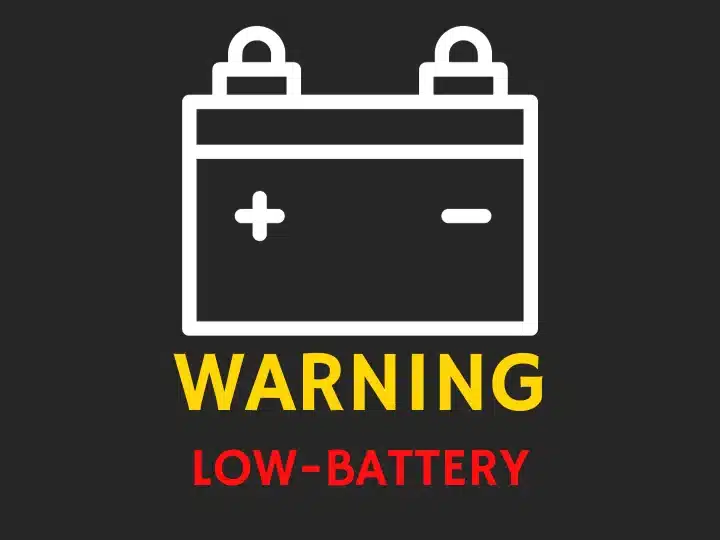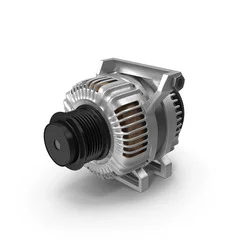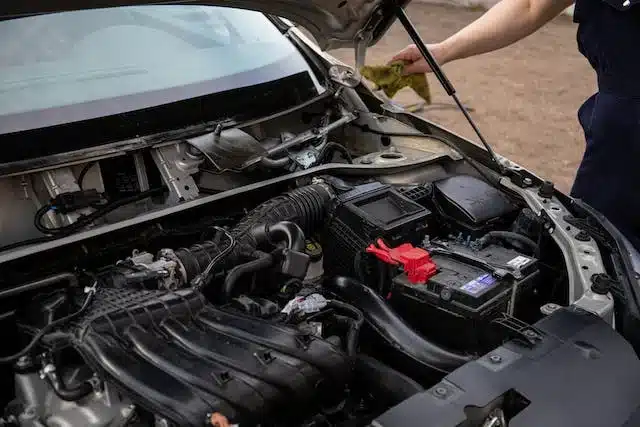Batteries are a ubiquitous part of our daily lives, powering everything from our essential devices to our vehicles. However, the frustration of a battery that no longer holds a charge is a common experience.
In this article, we delve into the reasons behind a car battery doesn't hold a charge, how to diagnose the issues, and effective strategies for fixing the problem.
Table Of Contents
- 1 Causes Why Car Battery Won't Hold Charge
- 2 Sulfation
- 3 Chemical Reactions and Wear
- 4 Battery Overcharging
- 5 Battery Deep Discharge
- 6 Faulty Alternator
- 7 Other Causes Why Car Battery Won't Hold Charge
- 8 What are the Symptoms of a Battery That Won't Hold a Charge
- 8.1 Diminished Cranking Power
- 8.2 Frequent Jump Starts
- 8.3 Inconsistent Electrical Accessories
- 8.4 Delayed or Weak Power Accessories
- 8.5 Warning Lights on the Dashboard
- 8.6 Unable to Hold a Charge After Charging
- 8.7 Visible Corrosion or Damage
- 8.8 Hydrometer Reading Indicates Low Specific Gravity
- 8.9 Unexplained Discharge
- 8.10 Battery Swelling or Bulging
- 8.11 Battery Age
- 9 Preventive Measures and Maintenance Tips
- 10 How to Fix a Car Battery That Doesn't Hold a Charge
- 11 Environmental Impact and Battery Recycling
- 12 Conclusion
Causes Why Car Battery Won't Hold Charge
Understanding “battery capacity” is crucial; it refers to the energy a battery can store and subsequently deliver. If a battery is having trouble holding a charge, several factors could contribute to the issue. Here are common causes:
Sulfation
Explanation of Sulfation
Sulfation is a common phenomenon in lead-acid batteries, occurring when these batteries are regularly operated in a partially discharged state. This results in the formation of sulfate crystals on the battery plates. These crystals act as an insulating layer, obstructing the normal electrochemical reactions within the battery.
Sulfation impedes the efficient flow of electrons between the battery plates, reducing the battery's overall capacity. The longer a battery remains partially discharged, the more pronounced the sulfation becomes, leading to a significant decline in performance over time.
How Sulfation Affects Battery Capacity
The presence of sulfate crystals on the battery plates diminishes the active material available for electrochemical reactions. As a result, the battery's ability to store and deliver energy is compromised. Sulfation leads to an increase in internal resistance, causing the battery to struggle during charging and discharging cycles. This results in reduced capacity, longer charging times, and an overall decline in the battery's efficiency.
Chemical Reactions and Wear
Impact of Charge and Discharge Cycles
The chemical reactions that occur during the charge and discharge cycles of a battery play a pivotal role in its overall performance. With each cycle, chemical changes take place within the battery's electrodes and electrolyte. Over time, these repetitive reactions contribute to wear and tear on the battery's internal components.
The continuous breakdown and reconstruction of chemical compounds cause physical changes, such as the expansion and contraction of electrode materials. This process, known as “mechanical stress,” gradually weakens the structural integrity of the battery, leading to a reduction in its overall lifespan and performance.
Wear on Electrodes and Electrolyte
The electrodes and electrolytes of a battery bear the brunt of the chemical reactions that power the device. As these reactions occur, the electrodes can experience degradation, and the electrolyte may change composition. This wear is exacerbated by high current flow, elevated temperatures, and the overall demands placed on the battery.
The wear on electrodes can result in the shedding of active material, reducing the effective surface area available for chemical reactions. Similarly, changes in the electrolyte can impact its ability to facilitate the necessary electrochemical processes. As a consequence, the battery's capacity to store and deliver energy diminishes over time.
Battery Overcharging
Overcharging Effects on Battery Health
Overcharging occurs when a battery is subjected to a charging voltage beyond its recommended levels for an extended period. This can lead to several detrimental effects on the battery's health. The excess voltage causes an increase in temperature, accelerating chemical reactions within the battery.
The electrolyte may undergo decomposition, resulting in the release of gases and increased internal pressure. Over time, these factors contribute to the breakdown of electrode materials, a reduction in overall capacity, and a noticeable decline in the battery's ability to hold a charge.
Signs of Battery Overcharging
Recognizing the signs of overcharging is crucial for preventing long-term damage to the battery. Common indicators include excessive heat during charging, electrolyte loss, and the release of gases. Additionally, frequent topping up of electrolyte levels in lead-acid batteries may be a sign that overcharging is occurring regularly.
Monitoring the charging voltage and ensuring that it aligns with the manufacturer's recommendations is essential to prevent overcharging and preserve the longevity of the battery.
Battery Deep Discharge

Consequences of Battery Deep Discharge
Deep discharge, or allowing a battery to be discharged to very low voltage levels, can have severe consequences for its health. During deep discharge, irreversible chemical reactions take place within the battery. This leads to the formation of crystalline structures on the electrodes, commonly referred to as “plate sulfation.”
Plate sulfation diminishes the active material on the battery plates, reducing their ability to participate in electrochemical reactions. The consequences include a significant decrease in battery capacity, increased internal resistance, and a shorter overall lifespan.
Strategies to Avoid Battery Deep Discharge
Preventing deep discharge is essential for maintaining battery health. Implementing strategies such as setting low-voltage cut-offs for electronic devices and using battery management systems in electric vehicles helps avoid situations where the battery is discharged to critical levels.
Additionally, regular monitoring of battery voltage levels and prompt recharging can prevent deep discharge. Educating users about the importance of avoiding prolonged periods of inactivity for batteries, especially in applications like vehicles and backup power systems, is crucial for preserving battery life.
Faulty Alternator

A faulty alternator can significantly impact a car battery's ability to hold a charge. The alternator plays a crucial role in the vehicle's electrical system by generating electrical power to recharge the battery and power the car's electrical components. Here's how a faulty alternator can affect a car battery:
Insufficient Charging
The alternator is responsible for converting mechanical energy from the engine into electrical energy to charge the battery. If the alternator is faulty, it may not generate enough power to recharge the battery adequately.
Gradual Battery Drain
A malfunctioning alternator may not consistently provide the required voltage to keep the battery charged. Over time, this leads to a gradual discharge of the battery, causing it to lose its ability to hold a charge.
Increased Load on the Battery
When the alternator is not functioning correctly, the vehicle's electrical components draw power directly from the battery. This puts an increased load on the battery, accelerating the discharge process and reducing its overall capacity.
Stalled Charging
In some cases, a faulty alternator may intermittently charge the battery or fail to charge it at all. This inconsistency can lead to a situation where the battery is not fully charged, reducing its ability to provide reliable power.
Strain on Battery Components
Continuous operation with a faulty alternator can strain the battery's internal components. The battery may experience excessive discharge and charge cycles, leading to the degradation of its plates and electrolytes. This degradation ultimately diminishes the battery's ability to store and deliver energy.
Risk of Complete Battery Failure
If a faulty alternator is not addressed, it can eventually lead to complete battery failure. The battery may become deeply discharged, and the constant strain on its components may result in irreversible damage.
Diminished Overall Electrical System Performance
The alternator powers not only the battery but also the entire electrical system of the vehicle. A faulty alternator can lead to erratic electrical system behavior, affecting lights, sensors, and other electronic components. This further contributes to the overall strain on the battery.
In summary, a faulty alternator can compromise the charging process, leading to a gradual depletion of the car battery's capacity. Regular maintenance and prompt replacement of a malfunctioning alternator are essential to ensure the proper functioning of the vehicle's electrical system and to preserve the health of the battery. If you suspect alternator issues, it's advisable to have the vehicle inspected by a qualified mechanic.
Other Causes Why Car Battery Won't Hold Charge

Internal Shorts: Internal short circuits within the battery can lead to rapid discharge and prevent the battery from holding a charge effectively.
Poor Maintenance: Neglecting proper maintenance, such as failing to check and refill electrolyte levels in lead-acid batteries, can contribute to a battery's decline in performance.
Parasitic Battery Drain: Some devices or systems connected to the battery may draw power even when the vehicle is turned off, leading to a gradual discharge and reducing your car battery's ability to hold a charge.
Corrosion: It seems like a barrier that stops the battery from receiving a full charge. It can increase resistance, affecting the flow of current and the car battery's ability to hold a charge.
Chemical Imbalances: Chemical imbalances within the battery, such as uneven distribution of electrolytes or active materials, can lead to diminished performance and the inability to hold a charge.
Addressing these issues promptly, practicing good battery maintenance, and following manufacturer recommendations for charging and usage can help maximize a battery's ability to hold a charge over time.
What are the Symptoms of a Battery That Won't Hold a Charge
A battery that won't hold a charge exhibits various symptoms, indicating underlying issues with its health and functionality. Here are common symptoms that suggest your battery is struggling to maintain a charge:
Diminished Cranking Power
When you attempt to start your vehicle, a weakened battery will provide insufficient power to the starter motor. This results in slow or labored cranking of the engine, often accompanied by a clicking sound.
Frequent Jump Starts

If you find yourself needing to jump-start your vehicle frequently, it's a clear sign that the battery is not holding a charge. While occasional jump starts may be necessary, frequent reliance on external power indicates an underlying issue.
Inconsistent Electrical Accessories
Dimming or flickering headlights, interior lights, or dashboard lights are indicative of a weak battery. The battery struggles to provide a consistent electrical supply to various components, resulting in fluctuations in brightness.
Delayed or Weak Power Accessories
Power accessories such as power windows, door locks, and the radio may operate slowly or with reduced power when the battery is weak. This is a result of the diminished electrical output from the battery.
Warning Lights on the Dashboard
Modern vehicles are equipped with warning lights that indicate battery or charging system issues. A battery-shaped light or a check engine light may illuminate when the battery is not holding a charge.
Unable to Hold a Charge After Charging
If you charge the battery using an external charger, and it quickly loses its charge after a short period, it suggests a problem with the battery's capacity to retain energy.
Visible Corrosion or Damage
Physical damage or visible corrosion on the battery terminals can contribute to poor electrical connections. This can lead to difficulties in charging and discharging, impacting the battery's overall performance.
Hydrometer Reading Indicates Low Specific Gravity
For lead-acid batteries, a hydrometer reading can provide insights into the state of charge. Low specific gravity readings in one or more cells indicate a compromised battery that may not be holding a charge effectively.
Unexplained Discharge
If the battery discharges even when the vehicle is not in use, there may be parasitic loads or an electrical issue that drains the battery when it should be at rest.
Battery Swelling or Bulging
Physical changes to the battery, such as swelling or bulging, can indicate internal issues. A compromised casing may indicate a damaged or failing battery.
Battery Age
Batteries have a limited lifespan, typically ranging from three to five years for lead-acid batteries and five to fifteen years for lithium-ion batteries. If your battery is nearing the end of its expected lifespan, it may struggle to hold a charge effectively.
If you experience one or more of these symptoms, it's advisable to have your battery tested and, if necessary, replaced
Preventive Measures and Maintenance Tips
Regular Charging Practices
Optimal Charging Cycles: Adhering to optimal charging cycles helps maintain battery health and prolong lifespan.
Avoiding Overcharging: Simple practices like using the right chargers and avoiding leaving devices plugged in unnecessarily prevent overcharging.
Environmental Considerations
Temperature and Storage: Storing batteries in cool, dry environments preserves their integrity and performance.
Protection from Moisture and Corrosion: Moisture and corrosion on battery terminals are common culprits for reduced performance; regular cleaning and protection are crucial.
Inspection and Cleaning
Checking Battery Terminals: Regularly inspecting and cleaning battery terminals ensures a good connection and efficient power transfer.
Addressing Corrosion: Practical steps for addressing and preventing corrosion on battery terminals.
How to Fix a Car Battery That Doesn't Hold a Charge
Diagnosing the Issue
To diagnose a car battery that isn't holding a charge, start by performing a voltage test. Use a multimeter to measure the voltage across the battery terminals. A fully charged 12-volt car battery should read around 12.6 volts. If the voltage is significantly lower, it indicates a potential issue with the battery.
During the test, observe the voltage drop when turning the ignition key. A noticeable drop suggests a weak battery unable to sustain the necessary voltage under load.
A visual inspection is equally important. Examine the battery for any physical damage, corrosion on terminals, or visible leaks. Damaged or swollen battery casings, corroded terminals, or the presence of a powdery substance (sulfate) are indicators of potential problems.
Additionally, inspect the alternator belt for proper tension and signs of wear, as a slipping or damaged belt can affect the charging system.
Fix Car Battery Doesn't Hold Charge
When you come to know that your car battery has become dead and cannot hold a charge, there are certain actions you can take to bring it back to normal.
- Jumpstart your vehicle
- Use Battery Reconditioning Methods
This article will be too long, so, to get in-depth info learn: How To Recondition A Car Battery That Won’t Hold Charge

Environmental Impact and Battery Recycling
Electronic waste, or e-waste, poses a significant environmental threat, with batteries being a notable contributor. The improper disposal of batteries, especially those containing hazardous materials, can lead to soil and water contamination, posing risks to ecosystems and human health.
Addressing e-waste involves raising awareness about responsible disposal methods. Encouraging users to utilize designated collection points for battery recycling helps mitigate the environmental impact associated with the improper disposal of batteries.
Recycling Options
Exploring recycling options is a key step in promoting sustainability and reducing the environmental consequences of battery disposal. Battery recycling facilities use advanced technologies to extract valuable materials like metals, plastics, and chemicals from used batteries.
Different battery chemistries require specific recycling processes. For instance, lead-acid batteries are commonly recycled to recover lead and sulfuric acid, while lithium-ion batteries undergo processes to retrieve materials like lithium, cobalt, and nickel.
Consumers are encouraged to inquire about local recycling programs and facilities that accept batteries for recycling. Some manufacturers and retailers also participate in take-back programs, where customers can return used batteries to be recycled responsibly.
Suggestion, also read, how can you make money with batteries that people throw in this post: Battery Reconditioning Business: How To Start One This Year
Additionally, advancements in recycling technologies continue to emerge, offering more efficient methods for recovering valuable materials from batteries. By actively participating in battery recycling programs, individuals contribute to the circular economy, promoting resource conservation and minimizing the environmental impact of battery disposal.
Encouraging widespread adoption of responsible battery disposal practices is essential for creating a sustainable approach to managing electronic waste. By incorporating environmental considerations into battery usage and disposal habits, individuals can play a crucial role in preserving the planet for future generations.
Conclusion
In conclusion, understanding the intricacies of battery health is pivotal for users seeking to maximize the performance and lifespan of their batteries. Key factors contributing to reduced battery performance, such as sulfation, chemical reactions, overcharging, deep discharge, high temperatures, age, and manufacturing defects, have been explored in-depth.
Recognizing the symptoms of a battery that won't hold a charge, including diminished capacity, rapid discharge, inconsistencies in charging, and warning lights or indicators, empowers users to take timely action to address potential issues.
- Car Battery Won't Hold Charge Why: How to Fix
- Signs Your Car Battery Is About To Die: How To Be Sure
- Reasons Why You Should Buy EZ Battery Reconditioning Today
- Benefits of Battery Reconditioning: Save Hundreds of Dollars Now!
- How To Recondition A Car Battery That Won't Hold Charge?
Related FAQ'S
We have selected 2 frequently asked questions related to car batteries not holding charge. But keep in mind that the editorial team will keep adding more. To resume these questions are:
- How long should a car battery hold a charge?
- What does it mean when your car battery keeps dying?
The length of time a car battery should hold a charge depends on various factors, including the battery's type, age, condition, and usage patterns. Here are general guidelines for different types of car batteries:
Lead-Acid Batteries
Lead-acid batteries, commonly found in traditional internal combustion engine vehicles, typically last between 3 to 5 years. The ability of these batteries to hold a charge can vary based on factors such as driving conditions, temperature, and maintenance.
Absorbent Glass Mat (AGM) Batteries
AGM batteries are a type of lead-acid battery with advanced technology. They tend to have a longer lifespan and better charge retention than traditional lead-acid batteries. AGM batteries can last between four to seven years or even longer with proper care.
Gel Cell Batteries
Gel cell batteries, another type of lead-acid battery, have a gel-like electrolyte. They are less common in automotive applications but may be found in certain vehicles. Gel cell batteries generally have a lifespan similar to that of AGM batteries.
Lithium-Ion Batteries
Lithium-ion batteries, commonly used in hybrid and electric vehicles, have a longer lifespan compared to traditional lead-acid batteries. They can last between eight to fifteen years, depending on the specific battery chemistry and usage conditions. Lithium-ion batteries also tend to have better charge retention over time.
It's important to note that various factors can influence the actual time a car battery holds a charge
If your car battery keeps dying, it indicates there's an issue affecting the battery's ability to hold a charge. Several potential reasons could contribute to this problem, and diagnosing the specific cause is essential. Here are common reasons why a car battery might repeatedly die: Sulfation, Parasitic Drain, Faulty Alternator, Old Age, Extreme Temperatures, Corroded or Loose Battery Terminals
If you experience repeated battery issues, it's crucial to address the root cause promptly
A battery that is defective, damaged, or nearing the end of its lifespan may struggle to hold a charge. In such cases, battery replacement may be necessary
